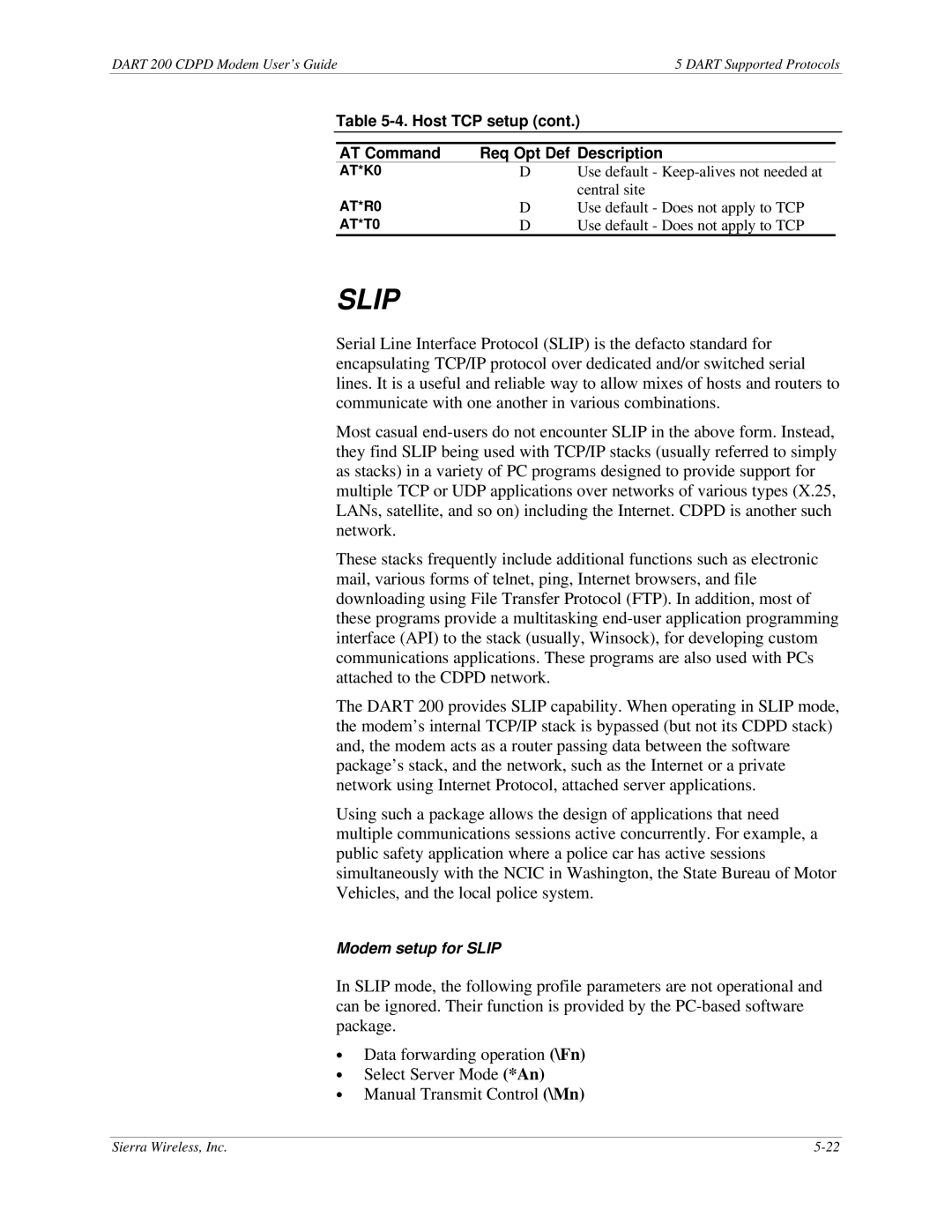
DART 200 CDPD Modem User’s Guide | 5 DART Supported Protocols |
Table 5-4. Host TCP setup (cont.)
AT Command | Req Opt Def Description | |
AT*K0 | D | Use default - |
AT*R0 |
| central site |
D | Use default - Does not apply to TCP | |
AT*T0 | D | Use default - Does not apply to TCP |
SLIP
Serial Line Interface Protocol (SLIP) is the defacto standard for encapsulating TCP/IP protocol over dedicated and/or switched serial lines. It is a useful and reliable way to allow mixes of hosts and routers to communicate with one another in various combinations.
Most casual
These stacks frequently include additional functions such as electronic mail, various forms of telnet, ping, Internet browsers, and file downloading using File Transfer Protocol (FTP). In addition, most of these programs provide a multitasking
The DART 200 provides SLIP capability. When operating in SLIP mode, the modem’s internal TCP/IP stack is bypassed (but not its CDPD stack) and, the modem acts as a router passing data between the software package’s stack, and the network, such as the Internet or a private network using Internet Protocol, attached server applications.
Using such a package allows the design of applications that need multiple communications sessions active concurrently. For example, a public safety application where a police car has active sessions simultaneously with the NCIC in Washington, the State Bureau of Motor Vehicles, and the local police system.
Modem setup for SLIP
In SLIP mode, the following profile parameters are not operational and can be ignored. Their function is provided by the
∙Data forwarding operation (\Fn)
∙Select Server Mode (*An)
∙Manual Transmit Control (\Mn)
Sierra Wireless, Inc. |
